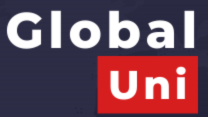With the incoming Trump presidency beginning on January 20, international education stakeholders in the US are bracing for what his second term could mean for the sector.
Beyond the political uncertainty, institutions are navigating changes associated with the rising price sensitivity of students, impending enrolment cliffs and the continued advancement of artificial intelligence.
While 2024 brought major policy changes in every other ‘big four’ destination, the sector’s so-called ‘sleeping giant’ – the US – saw record numbers of international students this year, with numbers expected to continue growing.
Amid an ever-shifting global landscape, we heard from experts on the ground in the US about their expectations, hopes and fears for international higher education in the coming year.
Political uncertainty
“While there is concern in the US international education community about the impacts of a new Trump administration, every new administration brings its own unique challenges.
“At Terra Dotta this will be our fifth administration change, and the industry has the benefit of experience with the previous Trump administration to inform our preparation and decision-making,” Terra Dotta SVP Travis Ulrich told The PIE News.
Ulrich said he anticipated several potentially acute policy changes in the first 100 days of Trump’s presidency, suggesting we might see visa restrictions and travel bans that could impact international students. And yet, he highlighted the contradictions in Trump’s policies, notably his proposal to grant green cards to international US college grads.
Ulrich’s predictions echoed those of immigration lawyer Aaron Blumberg, who, speaking at The PIE Live North America, said that many of Biden’s executive orders helping international students could be “eliminated in the first few days of the presidency”.
“The uncertainty is worrisome for many but is compounded by the impending enrolment cliff as many US institutions rely on international student enrolments to help buffer other demographic shifts,” said Ulrich.
Every new administration brings its own unique challenges
Travis Ulrich, Terra Dotta
And yet, reports have suggested that most prospective international students with their sights set on the US will not be deterred by Trump’s leadership.
Instead, they are concerned with the quality of education, affordability and work opportunities, said Ulrich, though the latter is likely to be impacted by the change of administrations.
Additionally, sector leaders emphasised that “this is a time to prepare not panic”, remaining hopeful that there will be potential for strong government engagement with the sector over the next four years.
Communicating the value of intled
For NAFSA – the national association of international educators – this will mean educating the new Congress and administration on international education as a “bipartisan solution to boosting workforce development, global competitiveness and US national security,” said Jill Allen Murray, NAFSA’s deputy executive director of public policy.
Allen Murray added that NAFSA would be focussing on promoting study abroad among US college students as an essential asset to their career-readiness in a globalised marketplace, as well as raising awareness of the contributions of international students in the country.
“Together with our partners inside and outside of higher ed. and our grassroots advocates, we will advance – and defend as necessary – the Senator Paul Simon Study Abroad Program Act, President-elect Trump’s call for stapling a green card to international student diplomas, and visa processing improvements, for example.”
Strengthening ties with those outside the industry was identified as a priority by Intead CEO, Ben Waxman, whose wish for 2025 was for education leaders and employers to develop a stronger partnership “to form a unified voice supporting access to education visas and work permits.
“Most employers don’t really have this on their radar, so it is on us to make the case and sign them on to our cause,” said Waxman, nodding to the economic value of international students – who contributed $50 billion to the US economy last year.
Beyond their financial contributions, immigration lawyer Aaron Blumberg highlighted what international students bring to “vibrancy of our academic institutions”, driving “groundbreaking research” and enhancing cultural exchange.
“I hope that the administration will demonstrate a commitment to fostering an environment that is welcoming to international students, enabling them to study, work, and live in the US,” said Blumberg.
NAFSA will be poised and ready for whatever challenges and opportunities await in the year ahead
Jill Allen Murray, NAFSA
Technology readiness and access to data
Stakeholders across the sector highlighted the importance of technology readiness and access to data to help institutions navigate change, two factors that have both increased since Trump’s first term and the pandemic.
For NAFSA, this will involve monitoring global mobility trends after the decline in new international student enrolment observed in IIE’s Fall 2024 snapshot.
Enrolment management teams will need to leverage “hard data and quick hit testimonials” and recognise the importance of career outcomes in their recruitment messaging, said Waxman, while advising digital marketing teams relying on SEO to lean more heavily into AI.
Meanwhile, Ulrich noted the importance of using data to identify bottlenecks to enhance the marketing and availability of new programs. He also highlighted the success of institutions using technology-powered SEVIS compliance platforms to help interface and track visa processing, which will be key to navigating potential immigration changes.
Price sensitivity
A greater focus on career outcomes and students’ return on investment is, in large part, a product of the growing unaffordability of higher education for many young people across the globe.
Waxman predicts the total number of students travelling across borders for their education in 2025 will continue to grow, “but the new entrants will have lower purchasing power than in the past”.
Therefore, institutions that want to remain relevant “will need to figure out whether they want those students and if so, what they can offer them”, he suggested.
According to HolonIQ data, in 2022, Nigerian students paid on average $15,000 per year for postgraduate programs in the US, compared to Chinese students who paid an average of $48,000.
With an emerging African market set to overtake China and India as the largest source of international students in the latter half of the century, institutions will have to “dramatically change” their program portfolios to meet the price points of these students, sector leaders have warned.
Career outcomes
In recognition of the importance of career outcomes to prospective international students, institutions must go beyond increased messaging and priorities the stronger alignment of labour market demands with university curriculums, said stakeholders.
“Institutions must design programs that directly address workforce needs, ensuring students are equipped with the relevant skills to thrive in a competitive global market,” said Chris Connor, University at Buffalo vice provost for enrolment.
Institutions must design programs that directly address workforce needs
Christopher Conner, University at Buffalo
Connor also highlighted the need for enhanced career readiness support for international students, who often make up the majority of those utilising career services, but whose tailored needs are not being met.
“Customizing these services, including employer networking opportunities, cultural workplace training, soft skill development, and clear pathways for post-graduation work authorisation, is essential,” recommended Connor.
Pointing to the University at Buffalo’s Institute for AI and Data Science, Connor said that the bridge between academia and industry needs to be strengthened to ensure that students are prepared for the workforce.
Companies, too, have a role to play in making labour market insights more accessible to students, with universities acting as intermediaries in providing them with the tools and services already out there, said Connor.
He also called for enhanced transparency around global employment outcomes for graduates, including salary data, which is “critical for students and institutions to measure the true value and competitiveness of their degrees”.
Though change is expected on the horizon, what stakeholders agreed on was the resilience of the international higher education community and the value it brings to the US.
“The United States is at a pivotal moment. It can either move in the direction of its English-speaking peer countries, which are putting restrictions on international students… or it can set a new standard,” said Allen Murray. “NAFSA will be poised and ready for whatever challenges and opportunities await in the year ahead.”




